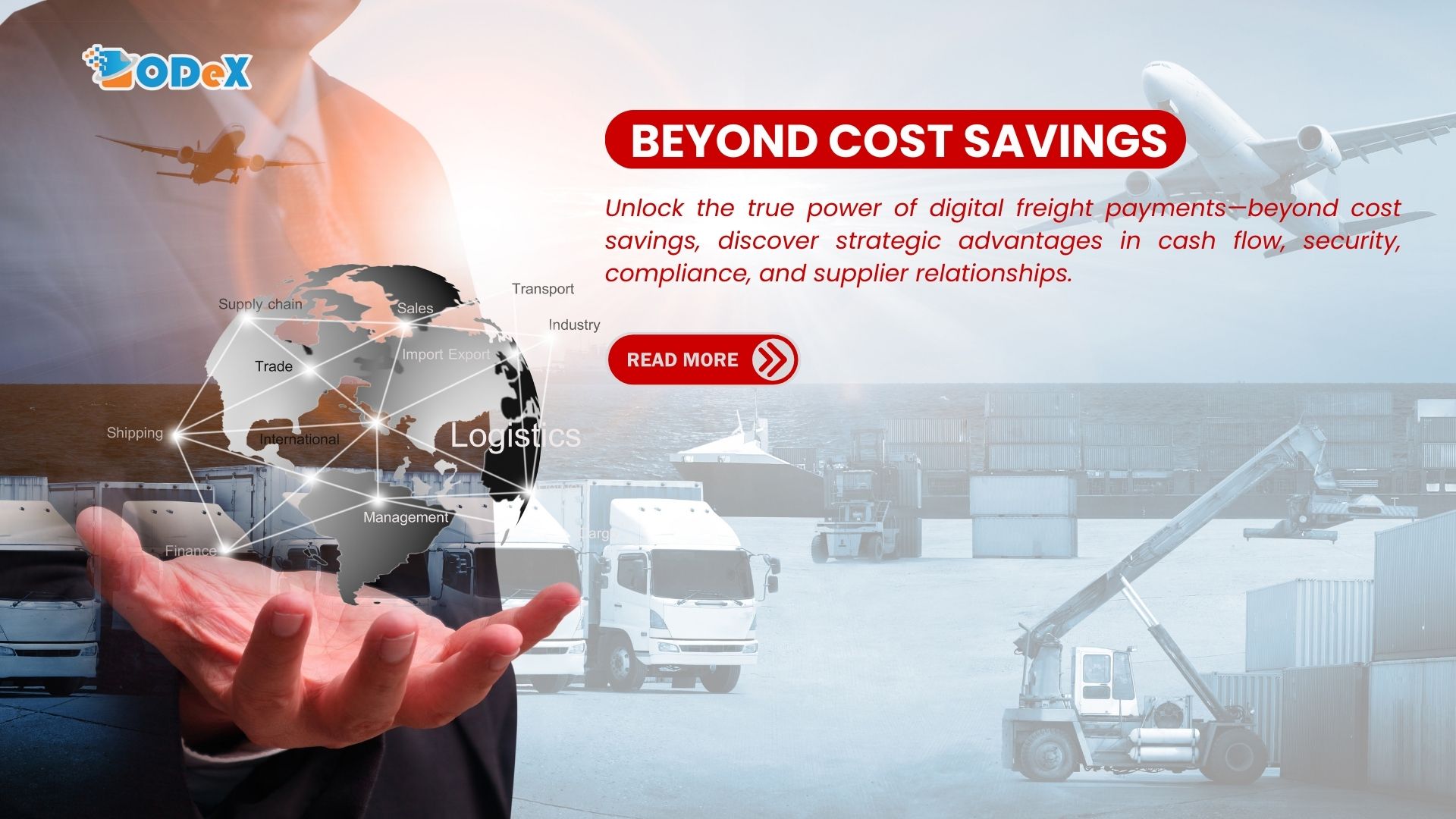Beyond cost savings - The strategic advantages of digital freight payments
The shipping and freight industry has traditionally relied on manual, paper-based payment processes that are time-consuming, prone to errors, and often lead to delays. While the shift to digital freight payments is often discussed in terms of cost savings, the real value extends far beyond reducing transaction fees.
Shippers, freight forwarders, and carriers can get strategic benefits from using digital payment solutions, such as better visibility of their cash flow or better security, compliance, and relationships with their suppliers.
In this blog, we’ll explore why digital freight payments are no longer just an option but a necessity in today’s complex global trade environment.
1. Improving cash flow visibility and predictability
All businesses rely heavily on cash flow, and in the freight industry, delayed payments can lead to significant financial strain. Traditional freight payment methods such as bank transfers and cheques can take days or even weeks to process or for proof of payment. This time is critical to clearing the goods, leading to cash flow uncertainty.
By shifting to digital freight payment solutions, businesses can monitor real-time payment tracking, automate invoice approvals, and eliminate manual reconciliation. This results in better cash flow management, fewer payment disputes, and more accurate financial forecasting—allowing companies to reinvest in their operations with confidence.
A well-managed cash flow system means businesses can reinvest in operations, negotiate better rates with suppliers, and reduce dependency on high-interest credit lines.
2. Strengthening security and fraud prevention
Freight payment fraud is a serious risk, especially in an industry where transactions involve multiple parties across different regions. Phishing attacks, invoice manipulation, and payment redirections are common threats that cost businesses millions annually.
Digital payment solutions incorporate multi-layer security measures, such as automated invoice validation, biometric authentication, and AI-driven fraud detection. Blockchain technology is also being introduced to create tamper-proof, immutable transaction records, reducing the risk of unauthorized changes or fraudulent invoices.
By eliminating manual payment handling, businesses not only reduce fraud risk but also enhance overall financial security.
3. Enhancing supplier and carrier relationships
Inconsistent payments can strain relationships with carriers, leading to delayed shipments, penalties, and reputational damage.
Instant or same-day payments give businesses a competitive edge by ensuring timely settlements, reducing administrative disputes, and opening doors to early payment discounts. Some carriers may offer preferential rates/considerations to shippers that have a track record of quick and reliable payments, ultimately benefiting the bottom line.
Logistics providers can focus on service quality instead of chasing payments, when they are seamless and predictable. Similarly, when payments are timely and transparent, carriers are more likely to prioritize shipments, offer competitive rates, and extend favorable credit terms.
4. Enhancing Regulatory Compliance
With increasing global regulations on financial transparency, anti-money laundering (AML), and trade sanctions, companies must ensure compliance with every transaction. Traditional payment systems often lack real-time monitoring and fail to flag high-risk transactions in time.
Digital freight payment solutions simplify compliance by automating regulatory checks, ensuring accurate documentation, and generating real-time compliance reports. Unlike manual processes that often result in reporting delays or errors, digital systems ensure that transactions meet legal and regulatory requirements effortlessly.
By staying compliant, businesses avoid penalties, safeguard their reputation, and build credibility with regulators and financial institutions.
Conclusion
While cost savings remain a key benefit of digital freight payments, the real strategic advantages lie in cash flow optimization, fraud prevention, supplier relationship management, and regulatory compliance.
Embracing digital payment solutions isn’t just about reducing expenses, it is about future proofing operations and staying competitive to create a resilient, secure, and future-proof freight payment ecosystem.
For companies who still rely on outdated payment methods, the time to transition is now. Digital freight payments are no longer optional, they are essential to staying competitive in global trade.
Contact our sales team for more information.


















